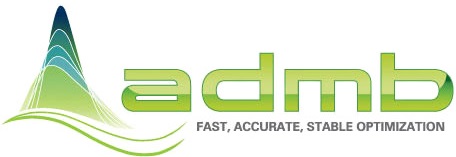ADMB is fast
The NCEAS benchmark shows that ADMB outperforms R and BUGS by a wide margin, when fitting a variety of non-trivial models.
Try it out
ADMB is free software.
The easiest way to start using ADMB in Windows is to install ADMB-IDE, which sets up ADMB with an editor, compiler, and debugger.
Linux and Mac users can download the source code and build ADMB from source, following the instructions included.
Build and run your first model
After installing ADMB, navigate to the ‘examples’ directory (by default, c:/admb/examples in Windows) and copy the ‘simple’ example to a working directory, such as c:/test/simple.
If you have ADMB-IDE installed, double-click ‘simple.tpl’, go to the ADMB menu and select Build. Wait for the compiler to build the model and then select Run and View Point Estimates.
Alternatively, open a shell and run admb simple to build the model and type simple to run the model. Then open ‘simple.par’ in a text editor to view the point estimates.
Next steps
Skim through the manuals, reference cards, and papers describing how ADMB works.
View the training videos, attend an upcoming course, or study material from previous courses.
Run and modify the examples that come with ADMB, download more examples from the ADMB website or elsewhere.
Write a small model related to your research.
Ask a question on the user mailing list and view answers to frequently asked questions.
